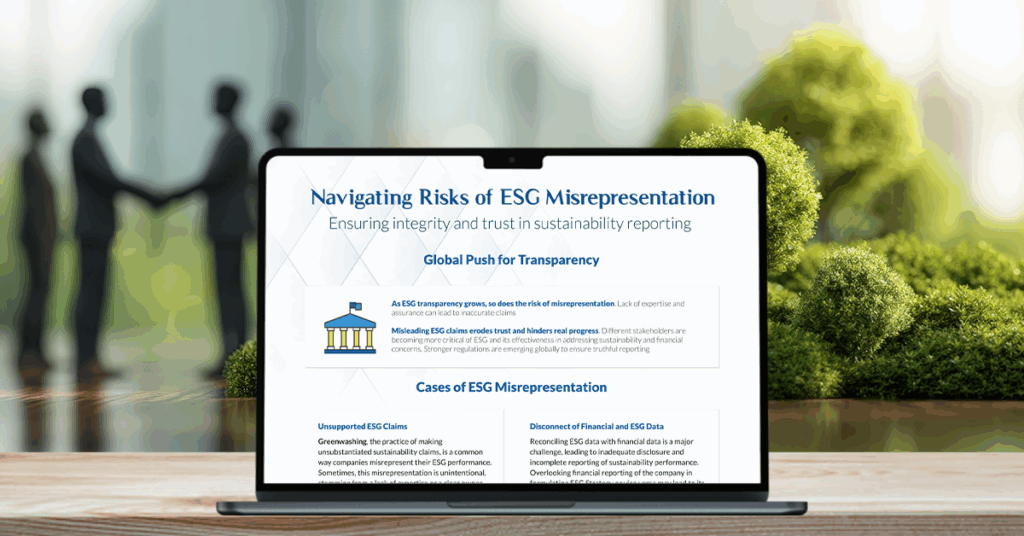Global Push for Transparency
As ESG transparency grows, so does the risk of misrepresentation. Lack of expertise and assurance can lead to inaccurate claims
Misleading ESG claims erodes trust and hinders real progress. Different stakeholders are becoming more critical of ESG and its effectiveness in addressing sustainability and financial concerns. Stronger regulations are emerging globally to ensure truthful reporting
Cases of ESG Misrepresentation
Unsupported ESG Claims
Greenwashing, the practice of making unsubstantiated sustainability claims, is a common way companies misrepresent their ESG performance. Sometimes, this misrepresentation is unintentional, stemming from a lack of expertise or a clear owner for the company’s ESG strategy.

Sustainable practices not supported by evidence

Claiming alignment to Sustainable Development Goals but lacks formal initiatives towards them

Highlighting CSR activities or donation but impact is not measured or assessed
Disconnect of Financial and ESG Data
Reconciling ESG data with financial data is a major challenge, leading to inadequate disclosure and incomplete reporting of sustainability performance. Overlooking financial reporting of the company in formulating ESG Strategy or vice versa may lead to its disconnect from operations.

Incomplete disclosure of GHG emissions due to failure to consider some relevant source of emissions found in accounting records

Adjustment of sustainability target after finding out that the previous target is not achievable as it is not based on company’s actual financial outlook and operations
Charting a Course towards Accurate Reporting
Avoid pitfalls of ESG Misrepresentation – Several steps to ensure integrity of ESG Disclosures:

Assess sustainability performance based on measurable metrics:
Establish ESG base data anchored on actual financial and operational performance of the organization. Set short-term, medium-term, and long-term sustainability targets with clear metrics to measure progress.


How Scrubbed Can Help
The increasing global push for ESG transparency presents a significant risk of misrepresentation, which can erode trust and impede genuine progress. Scrubbed helps you navigate this complex landscape by charting a course towards accurate and reliable sustainability reporting. Our ESG professionals can help you establish measurable metrics anchored to your financial and operational data, strengthen data assurance through robust controls, and stay abreast of evolving regulations. Partner with us to ensure the integrity of your ESG disclosures and build lasting stakeholder trust.








